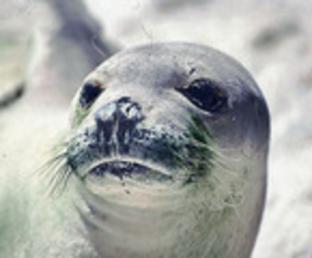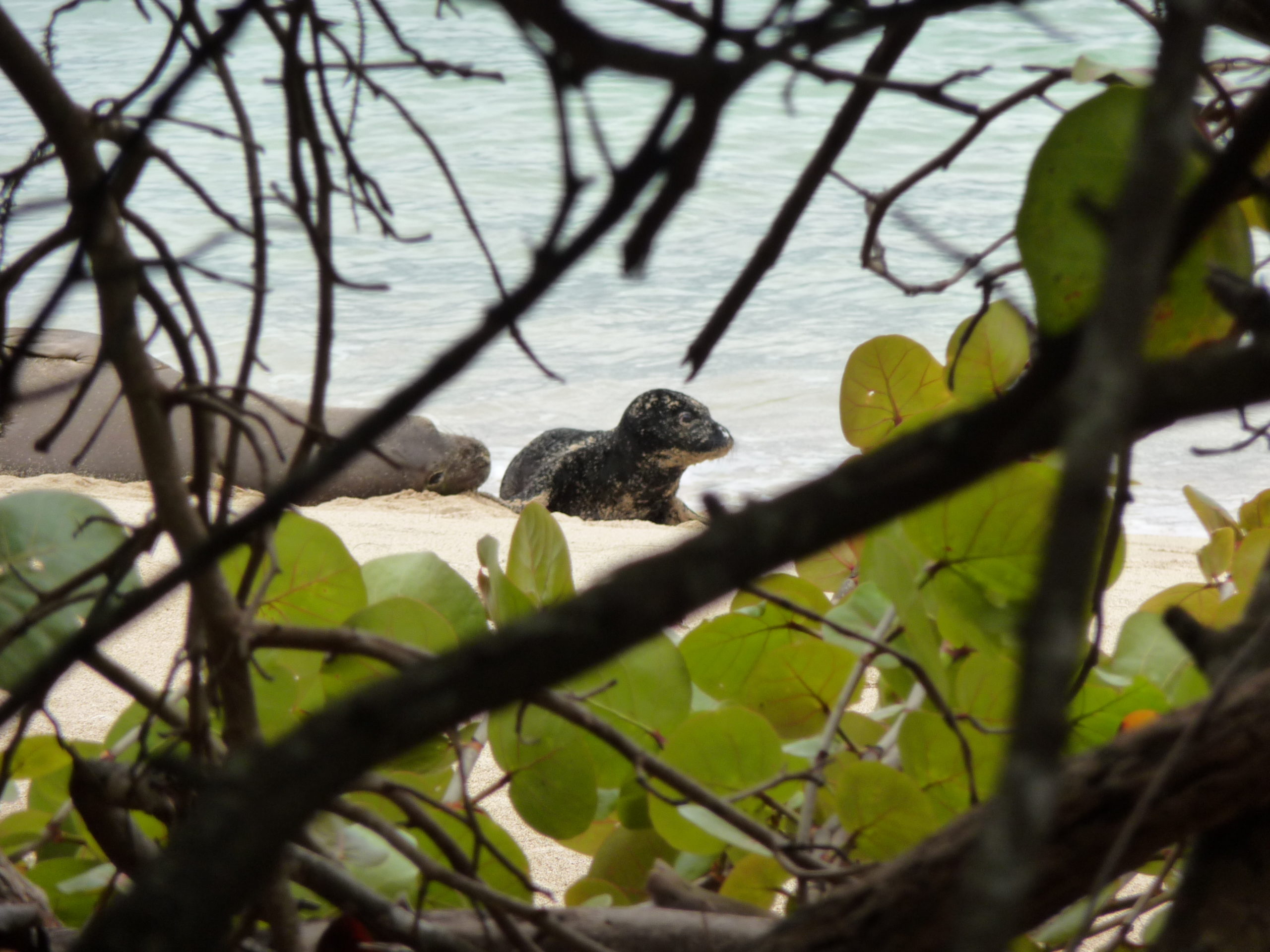Published in the Ocean Watch column, Honolulu Star-Advertiser © Susan Scott
August 29, 2011
Earlier this month, a news release from the Papahanaumokuakea Marine National Monument office stopped me in my tracks. Federal managers had decided to eliminate two serially aggressive male monk seals from Kure Atoll. This drastic action was deemed necessary because in their misdirected attempts to mate, the two adults have been squashing, drowning and biting baby seals to death.
 Susan Scott
Susan Scott
Starvation is one reason the Hawaiian monk seal population is declining.
This seal’s fur is green with algae, a sign of a long time foraging at sea.
Does “eliminate” mean “kill”? I emailed the NOAA contact. Yes, came the reply.
Oh, dear. It’s heartbreaking enough to euthanize robust wild animals, but with only 1,100 Hawaiian monk seals left in the world, it seems that there must be a better way. But options are few. Moving the violent seals to other areas would endanger other pups, and no aquariums or zoos can accommodate two rowdy, 400-pound monk seals.
Putting the males down is logical, but not universally accepted. Some people believe it’s better to leave the seals alone and let nature take its course. The trouble is, we humans have altered seal habitat for so long, nature’s course may now be a dead end.
For years, the Hawaiian monk seal population has been decreasing, primarily because the pups are starving. Other known causes of deaths are shark attacks and entanglement in nets.
Some people maintain that better management of fishing for lobster and bottom fish around the refuge would help address the seal food shortage. Others think sharks near pupping beaches should be killed.
The marine debris problem is more tangible, and federal workers can, and do, take it on, searching for lost fishing nets and lines. This summer, biologists rescued nine seals trapped in masses of such trash.
The other observable cause of monk seal decline, that of males killing pups, is a biological train wreck.
It’s normal for several male monk seals to fight for mating rights to a female. What is abnormal is lone adult males biting and mounting immature seals and pups, and killing them in the process. These males’ misplaced drive to reproduce turns the circle of life into a shortcut to extinction.
And so the controversial decision to euthanize Kure’s violent males was announced. But when federal researchers, scientists and a veterinarian tried to carry out their sad mission, they saw that one of the seals, a 5-year-old called K042, had settled down. The other male, 9-year-old KE18, was spotted and then vanished, nowhere to be found.
The clean getaway must have been somewhat of a relief for the team members, because they love animals. Then again, it is these biologists’ job to save the species, and KE18’s ferocious behavior thwarts that goal.
It’s easy to criticize decisions regarding endangered species. When that species is the monk seal, that’s the only thing that’s easy.
 Courtesy Scott Davis
Courtesy Scott Davis
Female Monk Seal and male pup, Mokuleia, Oahu, Hawaii, 2008